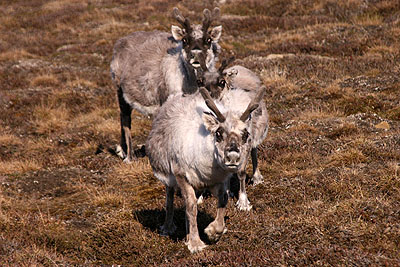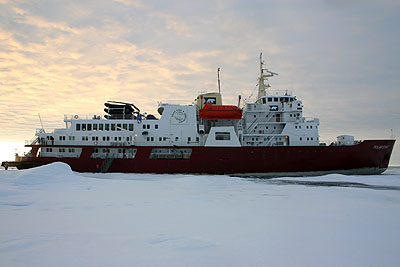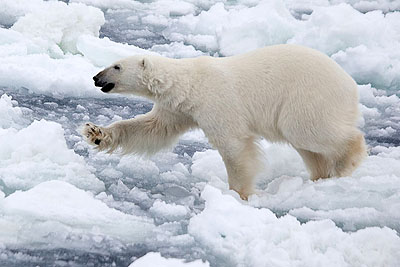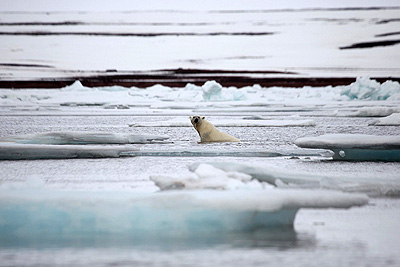-
current
recommendations- Liefdefjord
New page dedicated to one of Spitsbergen's most beautiful fjords. Background information and many photos.
- New Spitsbergen guidebook
The new edition of my Spitsbergen guidebook is out and available now!
- Liefdefjord
New page dedicated to one of Spitsbergen's most beautiful fjords. Background information and many photos.
Page Structure
-
Spitsbergen-News
- Select Month
- June 2025
- May 2025
- April 2025
- March 2025
- February 2025
- January 2025
- December 2024
- November 2024
- October 2024
- September 2024
- August 2024
- July 2024
- June 2024
- May 2024
- April 2024
- March 2024
- February 2024
- January 2024
- December 2023
- November 2023
- October 2023
- September 2023
- August 2023
- July 2023
- June 2023
- May 2023
- April 2023
- March 2023
- February 2023
- January 2023
- December 2022
- November 2022
- October 2022
- September 2022
- August 2022
- July 2022
- June 2022
- May 2022
- April 2022
- March 2022
- February 2022
- January 2022
- December 2021
- November 2021
- October 2021
- September 2021
- August 2021
- July 2021
- June 2021
- May 2021
- April 2021
- March 2021
- February 2021
- January 2021
- December 2020
- November 2020
- October 2020
- September 2020
- August 2020
- July 2020
- June 2020
- May 2020
- April 2020
- March 2020
- February 2020
- January 2020
- December 2019
- November 2019
- October 2019
- September 2019
- August 2019
- July 2019
- June 2019
- May 2019
- April 2019
- March 2019
- February 2019
- January 2019
- December 2018
- November 2018
- October 2018
- September 2018
- August 2018
- July 2018
- June 2018
- May 2018
- April 2018
- March 2018
- February 2018
- January 2018
- December 2017
- November 2017
- October 2017
- September 2017
- August 2017
- July 2017
- June 2017
- May 2017
- April 2017
- March 2017
- February 2017
- January 2017
- December 2016
- November 2016
- October 2016
- September 2016
- August 2016
- July 2016
- June 2016
- May 2016
- April 2016
- March 2016
- February 2016
- January 2016
- December 2015
- November 2015
- October 2015
- September 2015
- August 2015
- July 2015
- June 2015
- May 2015
- April 2015
- March 2015
- February 2015
- January 2015
- December 2014
- November 2014
- October 2014
- September 2014
- August 2014
- July 2014
- June 2014
- May 2014
- April 2014
- March 2014
- February 2014
- January 2014
- December 2013
- November 2013
- October 2013
- September 2013
- August 2013
- July 2013
- June 2013
- May 2013
- April 2013
- March 2013
- February 2013
- January 2013
- December 2012
- November 2012
- October 2012
- September 2012
- August 2012
- July 2012
- June 2012
- May 2012
- April 2012
- March 2012
- February 2012
- January 2012
- December 2011
- November 2011
- October 2011
- September 2011
- August 2011
- May 2011
- April 2011
- March 2011
- February 2011
- January 2011
- December 2010
- November 2010
- September 2010
- August 2010
- July 2010
- June 2010
- May 2010
- April 2010
- March 2010
- February 2010
- November 2009
- October 2009
- August 2009
- July 2009
- June 2009
- May 2009
- April 2009
- March 2009
- February 2009
- January 2009
- December 2008
- November 2008
- October 2008
- August 2008
- July 2008
- June 2008
- May 2008
- April 2008
- March 2008
- February 2008
- April 2000
- Select Month
-
weather information
-
Newsletter

| Guidebook: Spitsbergen-Svalbard |
Home
→ February, 2011
Monthly Archives: February 2011 − News & Stories
Positive netto balance in 2009
The Norwegian public budget for Spitsbergen was positive in 2009, for the first time in 33 years. Mainly tax income from major companies have contributed to the income. The mining company Store Norske is the largest tax payer (278 million Kroner), followed by the oil and gas plattform service company Seadrill Norge (92 millionen Kroner). In 2009, the netto transfer was 33 million Kroner from Spitsbergen to Norway. In comparison: in 2007, Spitsbergen was subsidised with 310 million Kroner, the figure for 2008 is 347 millions.
Happy to have some cash in the bank: Reindeer in Adventdalen
Source: Svalbardposten
Environmental impact of expedition cruising in Svalbard
A new study has been published to assess the environmental impact of expedition cruise ships on the Svalbard environment. The study has been made by Akvaplan-Niva, a research organisation and consultancy within marine and freshwater environment, and it was encouraged and supported by AECO, an organisation that represents the expedition cruise operators in the region. After observing several smaller (70-100 passengers) ships in the field, the authors compiled a detailed study concerning different aspects of the operation. A summary includes the following points:
- The environmental awareness amongst ship crew, guides and passengers is described as high.
- Operation and activities are already strictly controlled by laws and self-imposed regulations.
- Emissions from smaller ship into air and water are “relatively low”.
- Introduction of new species in ballast water, on the ship’s hull or attached to clothing can potentially be very damaging. The report suggests mitigation measures.
- Further detailed studies are needed to assess the impact of repeated noise and presence of groups on seabirds and marine mammals.
- The largest immediate threat to the environment is a major oil spill. Risk analysis shows that the likelihood of such an event, caused by an expedition cruise ship, is “relatively low”: likely once in 300 years, expected reduction to once in 700 years within a few years once better charts and technology are available. It is considered positive that relevant ships all use marine diesel (MDO/MGO) exclusively, which is generally assumed to be far less devastating in case of spills compared to heavy oil, which remains far longer in the environment. Nevertheless, potential damage of oil spill can be very serious, including loss of a breeding season and adult birds of local seabird colonies.
- Actual numbers do not reflect the increase of tourism that is often used as argument for proposed further restrictions: the numbers of persons who went ashore, as well as the number of visited sites, has remained largely stable since 2004/05. Large oversea cruise ships have experienced relatively strong growth, but these ships visit mainly the settlement and Gravneset in Magdalenefjord, but hardly land passengers elsewhere. The active ban on heavy oil in all protected areas and the end of temporary regulations (allowing heavy oil on shortest safe routes to settlements and into Magdalenefjord until 2014) is expected to reduce the number of large cruise ships drastically.
Polar Star was one of the ships observed by Akvaplan-Niva
Source: Svalbard Science Forum, including the report by Akvaplan Niva
Jason Roberts “expelled”
A letter of the Norwegian authority for foreigners to Jason Roberts, Australian citizen living in Longyearbyen, has created confusion. Jason runs a Longyearbyen-based company assisting major film productions.
In 2009, Jason turned his company into a shareholder company, for which other regulations apply. The unforeseen consequence was that Jasons routine application for for a work permit in Norway was turned down. Jason needs such a permit only for occasional work in Norway, but not in Svalbard. Nevertheless, the foreigners authority informed Roberts that he has to “leave Norway voluntarily” and contact the Sysselmannen to discuss further details. In the Sysselmannen, though, it was quickly clear that the letter had to be wrong. As all citizens of Spitsbergen treaty signatory countries, Roberts has automatically equal and unlimited rights to live and work in Svalbard without any applications or permits. The foreigner authority said the letter was “somewhat misleading”. Roberts himself made rather clear that he was not amused.
Locked out …?
Source: Svalbardposten
Polar bear to Japan?
The Japanese zoo Nihondaira has applied for a female polar bear from Spitsbergen to be delivered to Japan, for exhibition together with a male bear that already lives in the zoo, and to produce offspring.
The Sysselmannen in Longyearben reacted reluctantly, saying a good reason could not be seen to catch a polar bear in Spitsbergen for delivery to a Japanese zoo, and that the matter is not realistic. Polar bears are completely protected in Spitsbergen since 1973.
Likes to stay where she is: polar bear in Svalbard
Source: Svalbardposten
Dog killed by polar bear
A polar bear has attacked the dogs of the Polish research station in Hornsund. One was killed, two more were injured. The bear had already spent several days around the station and attacked the dogs. Even warning shots and rubber bullets had failed to scare the bear away.
The Sysselmannen has now tried to scare the bear away with the helicopter. All station members were vaccinated against rabies, as some had been in touch with the dogs that had been attacked.
Polar bear and dog, Kapp Linné (1999). The dog survived without injuries, but had to step aside and let the bear have its dinner.
Source: Sysselmannen
Spitsbergen: a tax oasis?
Because of the regulations of the Spitsbergen treaty, Spitsbergen is VAT-free zone and has a low company tax of 16 % rather than 28 %, as in mainland Norway. Consequently, Longyearbyen is an attractive place for companies to settle down, but authorities are getting stricter on conditions to be met by companies taxating in Spitsbergen: a local office and management are needed. The low tax regulation is for local companies rather than tax refugees.
Two companies have recently been „expelled“ from Spitsbergen, including a daughter of the oil rigg provider Seadrill Norge. With only one man in Longyearbyen, the company had an income of about 700 million Norwegian Kroner (88 million Euro), more than the largest local employer Store Norske (mining, 557 million Kroner).
Source: Svalbardposten
Climate change in and around Spitsbergen
Everybody is talking about climate change in the arctic, but what is actually going on? The Norwegian Polar Institute, through its MOSJ-project (environmental monitoring of Svalbard and Jan Mayen), has gathered a range of data that make it quite clear that accelerating climate change is a measurable fact: the temperature has a tendency to increase during most of the 20th century, with a marked and still increasing acceleration in recent years. Precipitation is following, although the trend is less pronounced and clear here.
The sea ice has decreased by 35-40 % (area; referring to maximum distribution in April) from 1979 to 2009, and it is getting thinner: from 1.20 meters (1966) to 0,80 meters (2006) around Hopen island. Temperatures at the top level of the permafrost are by now increasing as fast as 1°C per decade, and glaciers around Ny Ålesund have lost 15 meters of average thickness, also here with a strongly accelerating tendency in recent years.
Polar bear in open drift ice: symbol of climate change
Source: MOSJ (Miljøovervåking på Svalbard og Jan Mayen), Norwegian Polar Institute
News-Listing live generated at 2025/June/15 at 07:09:54 Uhr (GMT+1)


































